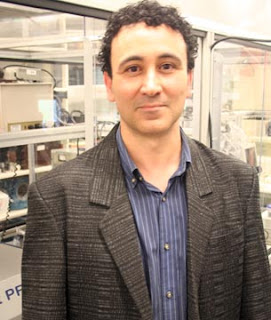| Books by the authors and related This book will help a lot of people, especially students and young researchers in optics, engineering science, and experimental physics, to stay out of a lot of trouble. I predict that many students and professors are going to be very grateful to Mark Johnson! Considered one of the major fields of photonics of the beginning 21st century, plasmonics offers the potential to confine and guide light below the diffraction limit and promises a new generation of highly miniaturized photonic devices. | The new technology, which the researchers call spinplasmonics, may be used to create incredibly efficient, electron-spin-based photonic devices, which in turn may be used to build, for example, computers with extraordinary memory capacities. "We've only just begun to scratch the surface of this field, but we believe we have the physics sorted out and one day this technology will be used to develop very fast, very small electronics that have a very low power consumption," said Elezzabi, the Canada Research Chair in Ultrafast Photonics and Nano-Optics and an electrical and computer engineering professor at the U of A. Elezzabi's work addresses a number of challenges that have hindered further advancement in computer electronics, like the creation of smaller devices. One such challenge is that as traditional, silicon-based semiconductor devices approach the nanoscale, the laws of quantum physics take control over their performance (specifically the flow of charges-i.e. electrons) and render them inoperable. Researchers in the field of spintronics have tried to address this problem by building metal-based devices that harness the magnetic quantum properties of the spin of electrons. Although the spintronics field is barely 12 years old, some devices that incorporate spintronics technology are already on the market. The field of plasmonics, which is even younger than spintronics, involves the transfer of light electromagnetic energy into a tiny volume, creating intense electric fields - a phenomenon that has many scientists rethinking the laws of electromagnetics on a nanoscale. The plasmonics field has many wide-ranging applications, from guiding light through metal wires, to bio-sensing, to making objects invisible to the eye. One of the main challenges for plasmonics researchers is finding a way to propagate light over a long distance through solid materials. However, Elezzabi and his colleagues, U of A graduate student Kenneth Chau and professor Mark Johnson of the U. S. Naval Research Laboratory, have successfully combined plasmonics and spintronics in a way that puts plasmonics in a new light and puts a new spin on spintronics. |
"With the development of this technology I envision a move from semiconductors [silicon chips] to metal-based electronics with light-driven circuits," Elezzabi said.
The research was published recently in the academic journal Physical Review Letters, and the researchers have filed for a patent for the applications they have developed.
"To me, this is almost a natural evolution of the two fields," he said. "I'm actually surprised that no one else looked around and saw what others were doing and combined the two before we did. This opens up a lot of possibilities; this is just the beginning."
Contact: Ryan Smith ryan.smith@ualberta.ca 780-492-0436 University of Alberta ExpressNews Staff
Technorati Tags: nano or Nanotech and Nanotechnology or plasmonics and light-emitting diodes or ultraviolet light and Nanotechnology Today or Public Domain Clip Art and Republican National Convention Blog















No comments:
Post a Comment